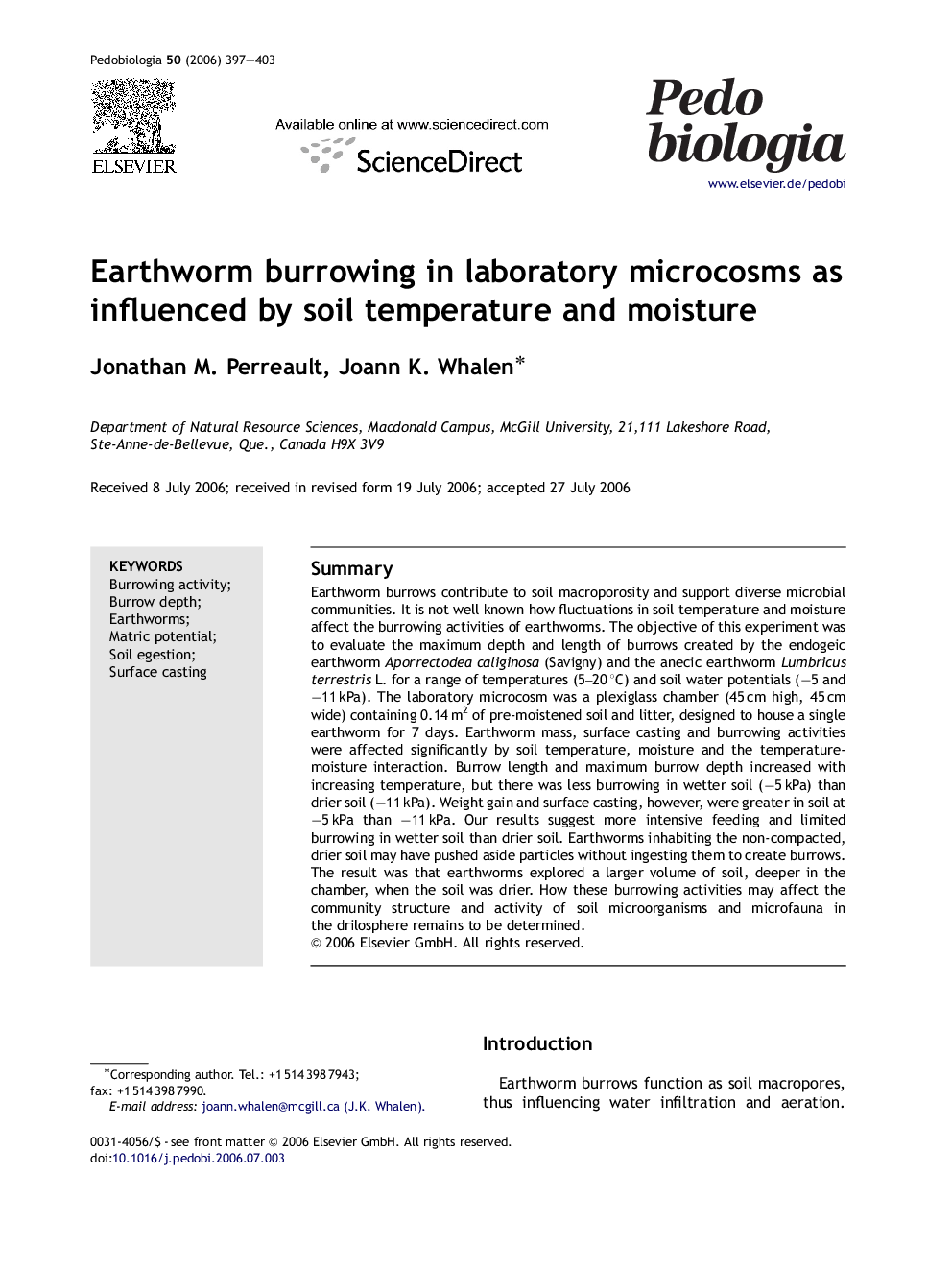| کد مقاله | کد نشریه | سال انتشار | مقاله انگلیسی | نسخه تمام متن |
|---|---|---|---|---|
| 2061345 | 1076456 | 2006 | 7 صفحه PDF | دانلود رایگان |

SummaryEarthworm burrows contribute to soil macroporosity and support diverse microbial communities. It is not well known how fluctuations in soil temperature and moisture affect the burrowing activities of earthworms. The objective of this experiment was to evaluate the maximum depth and length of burrows created by the endogeic earthworm Aporrectodea caliginosa (Savigny) and the anecic earthworm Lumbricus terrestris L. for a range of temperatures (5–20 °C) and soil water potentials (−5 and −11 kPa). The laboratory microcosm was a plexiglass chamber (45 cm high, 45 cm wide) containing 0.14 m2 of pre-moistened soil and litter, designed to house a single earthworm for 7 days. Earthworm mass, surface casting and burrowing activities were affected significantly by soil temperature, moisture and the temperature×moisture interaction. Burrow length and maximum burrow depth increased with increasing temperature, but there was less burrowing in wetter soil (−5 kPa) than drier soil (−11 kPa). Weight gain and surface casting, however, were greater in soil at −5 kPa than −11 kPa. Our results suggest more intensive feeding and limited burrowing in wetter soil than drier soil. Earthworms inhabiting the non-compacted, drier soil may have pushed aside particles without ingesting them to create burrows. The result was that earthworms explored a larger volume of soil, deeper in the chamber, when the soil was drier. How these burrowing activities may affect the community structure and activity of soil microorganisms and microfauna in the drilosphere remains to be determined.
Journal: Pedobiologia - Volume 50, Issue 5, 30 October 2006, Pages 397–403